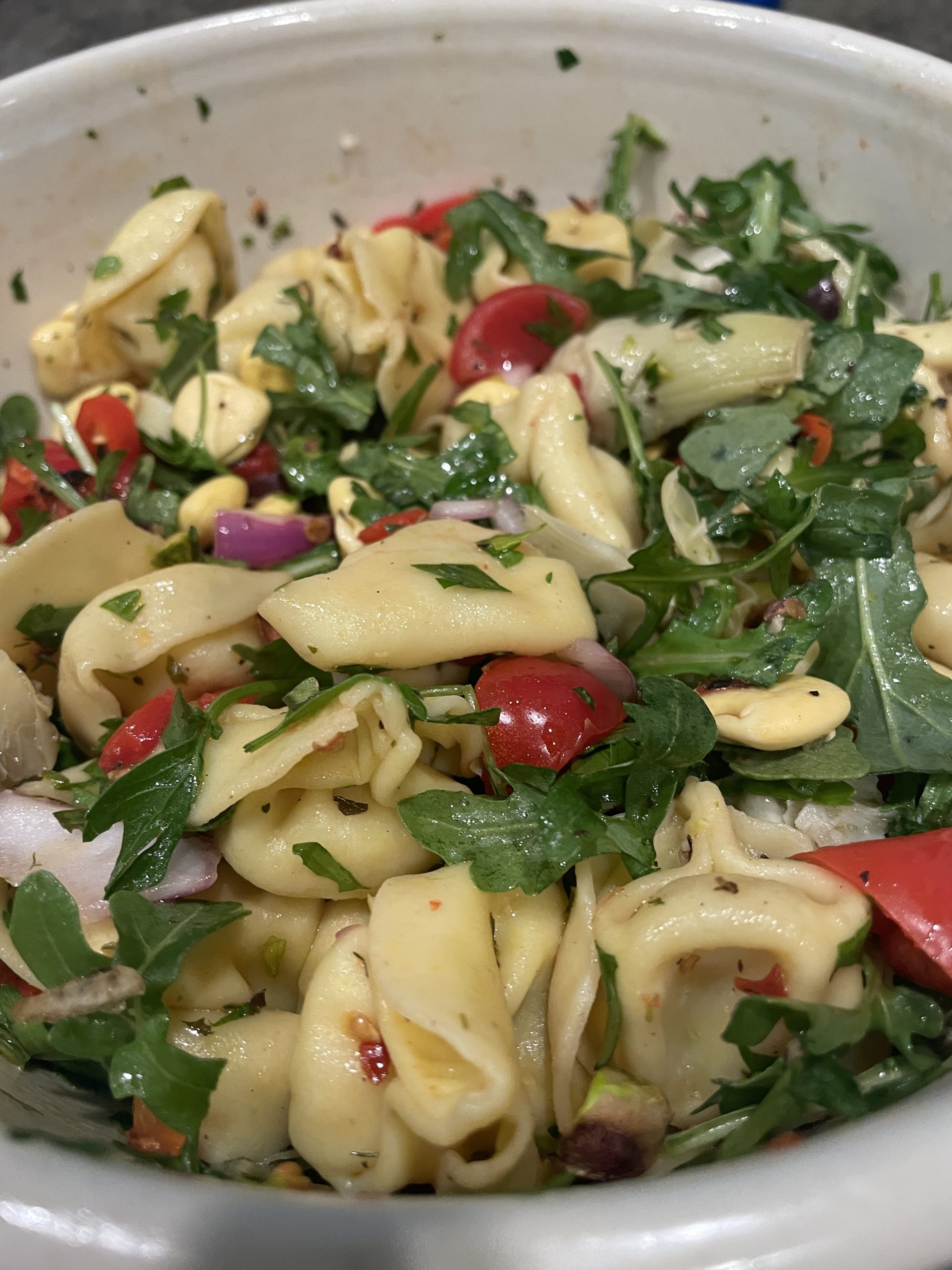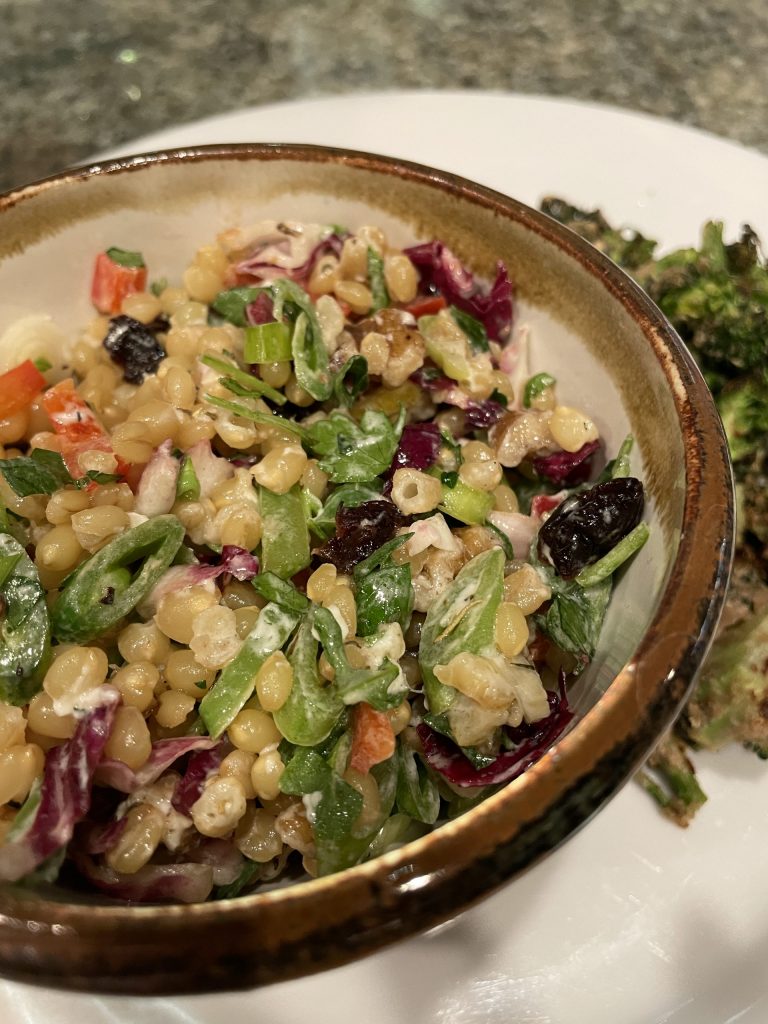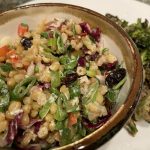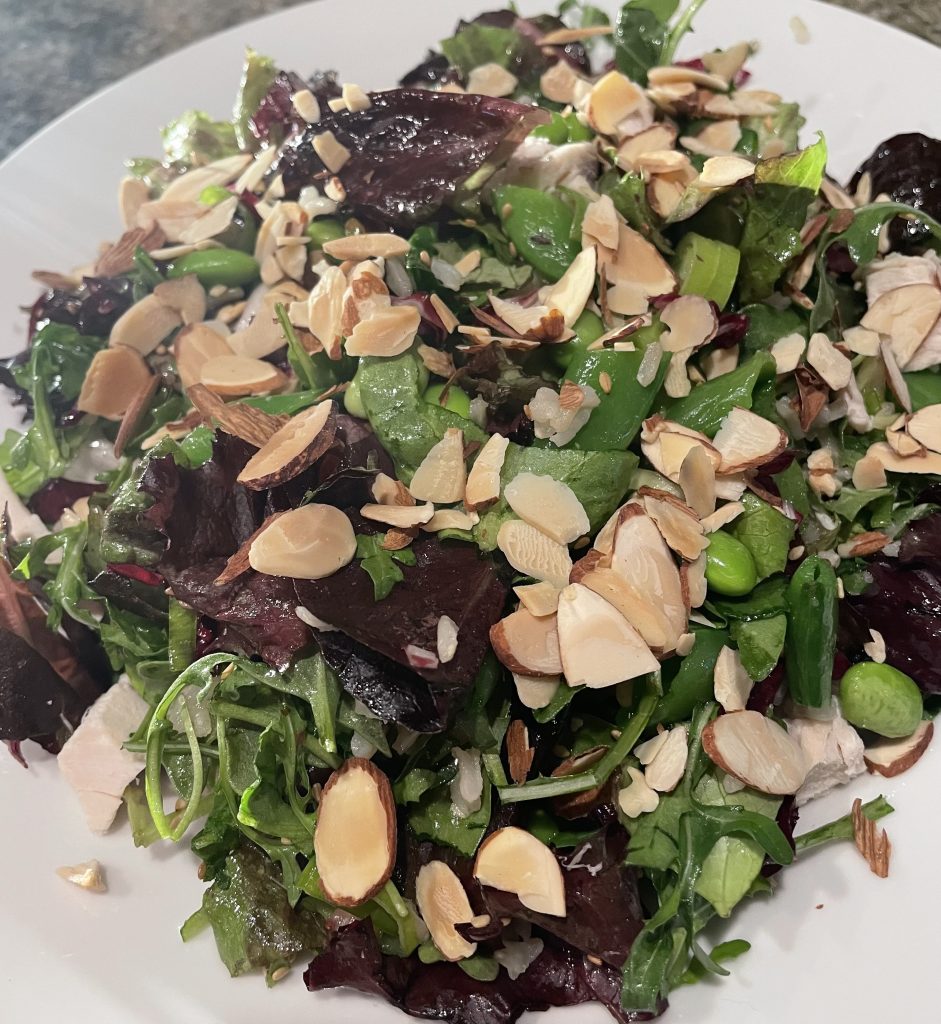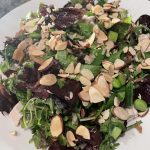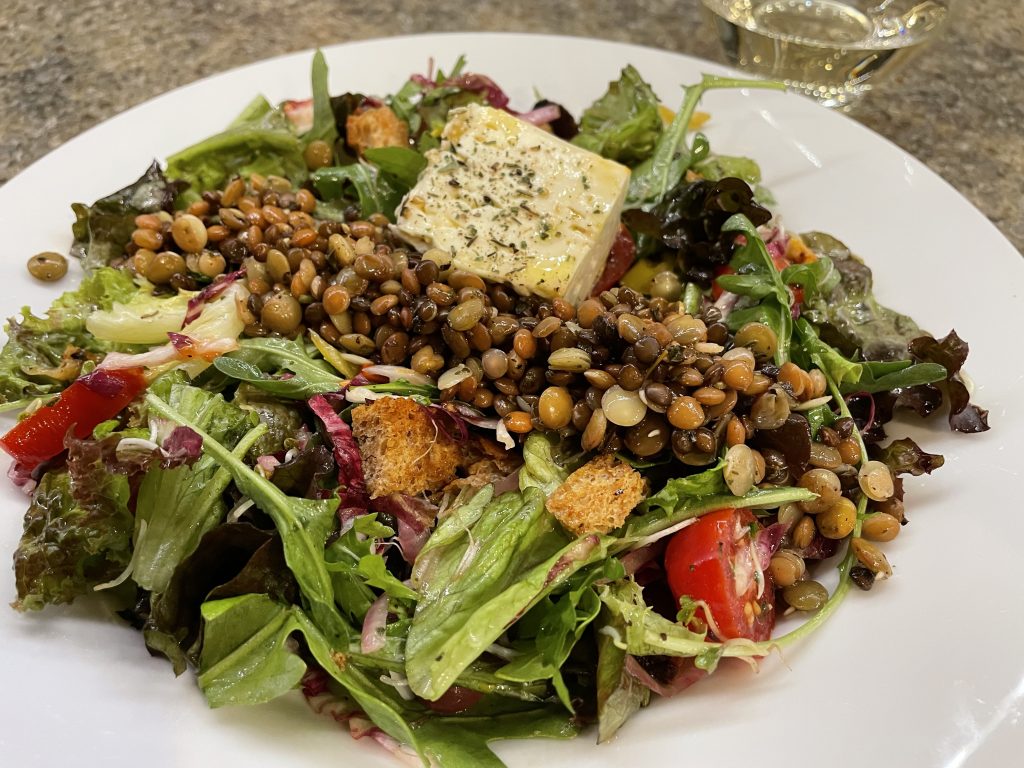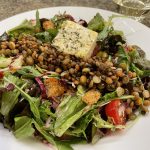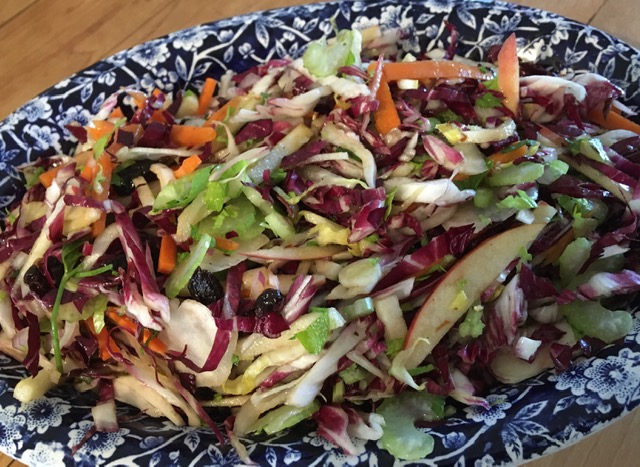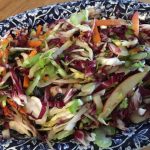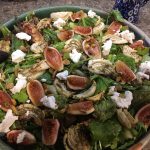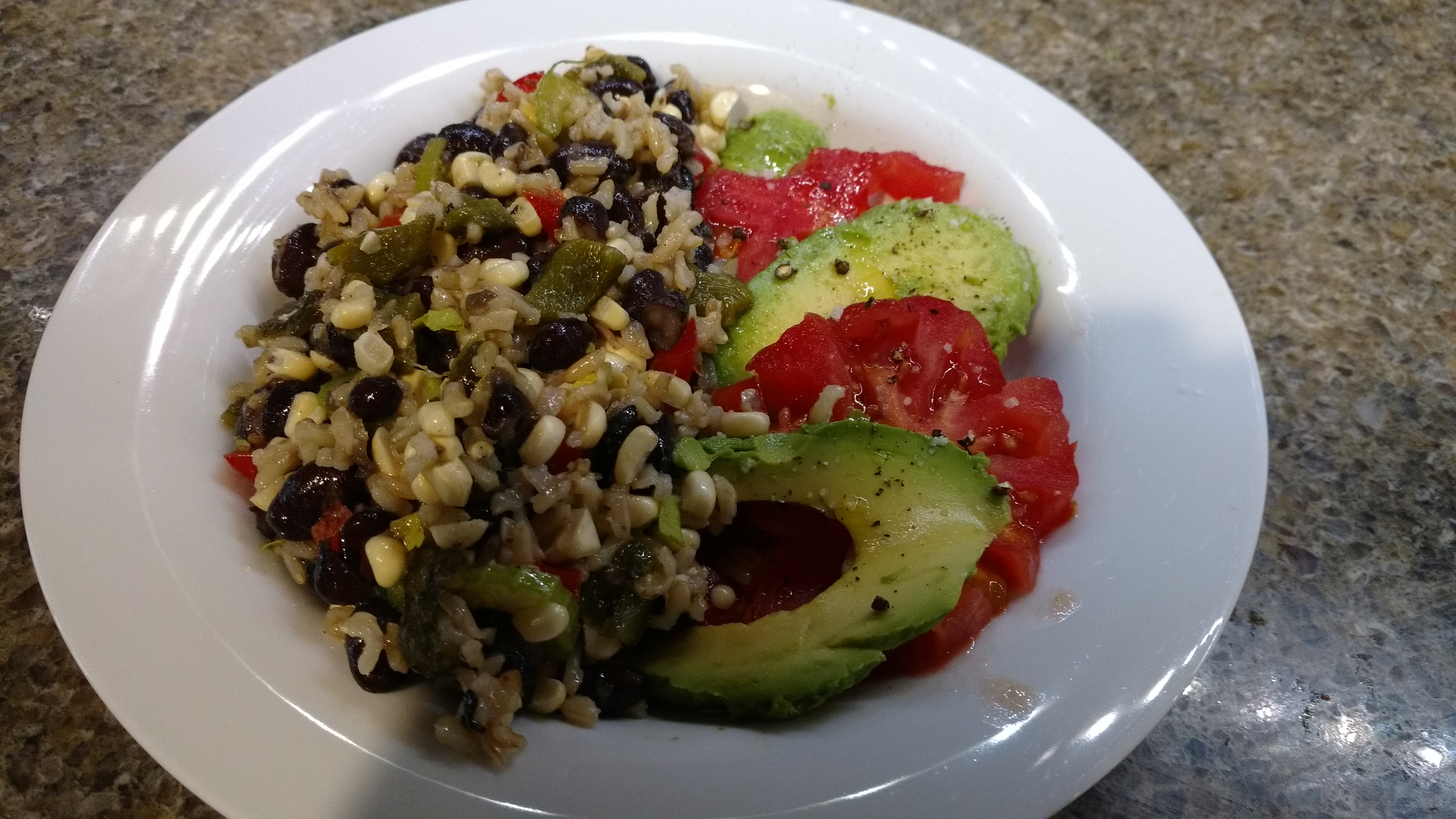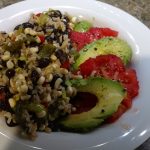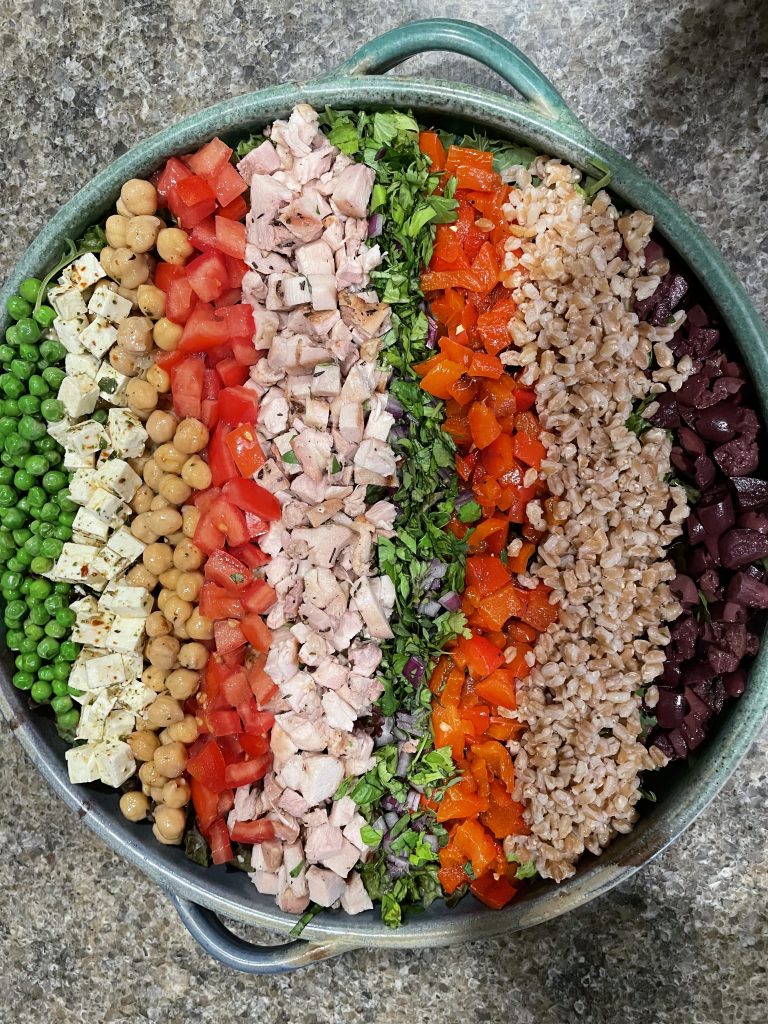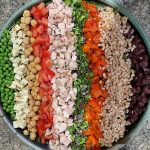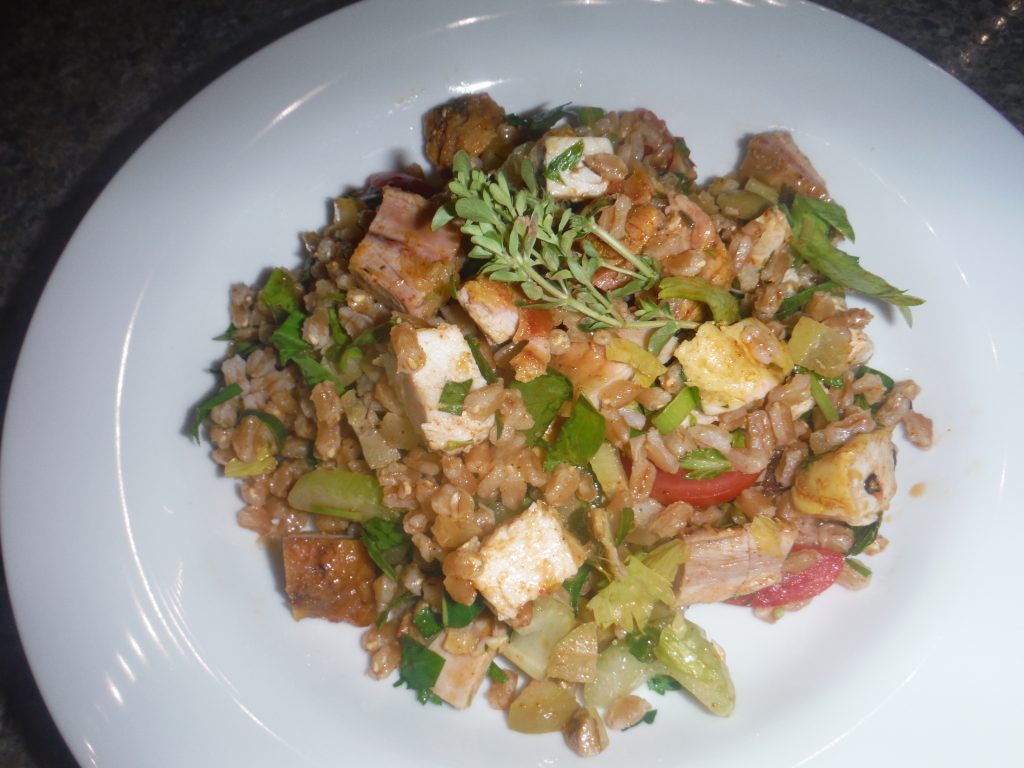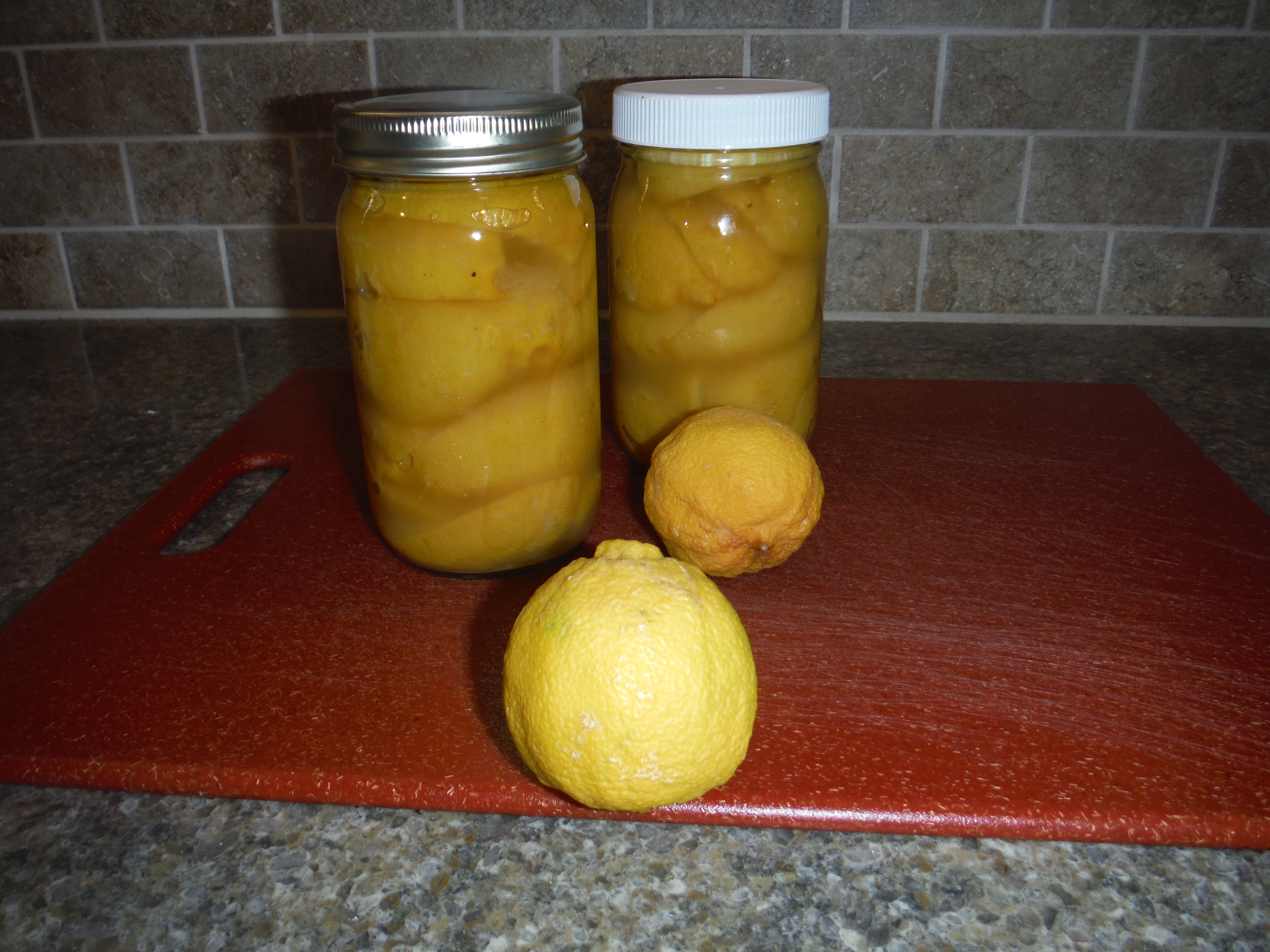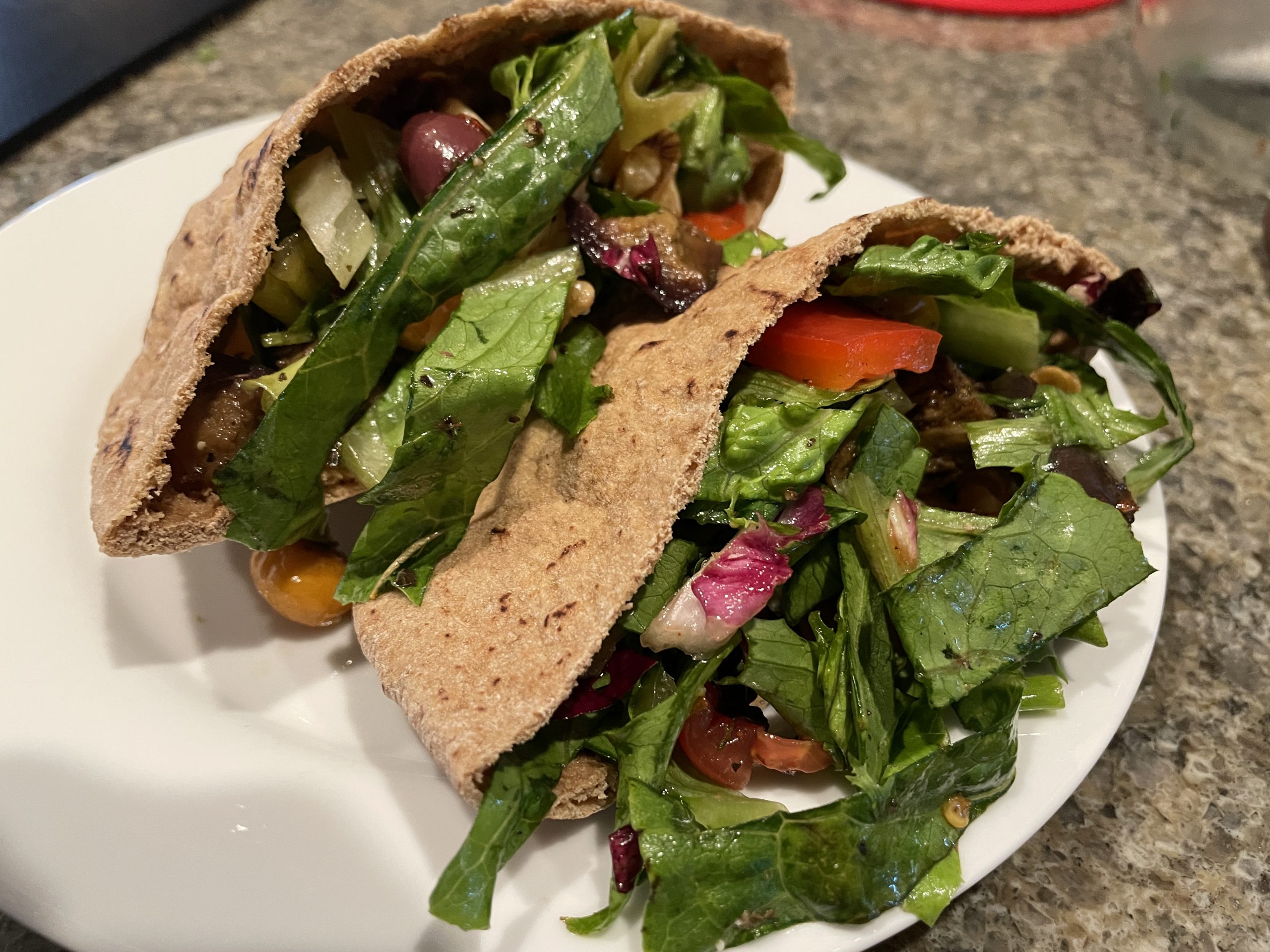
Autumn is my favorite season, and September is right around the corner. My midwestern persona rejoices in the upcoming cooler weather, while my Arizona persona reminds me that cooler weather just might arrive by mid-October here in the Sonoran desert…yes, it’s that time of year when the heat just keeps on giving, and “cooking” becomes more like “assembling.” I like pulling cool, crisp salad meals together, more from a template than a recipe. And preferably from what’s already in the pantry and fridge. When warm weather menus require actual cooking, my new-ish toaster oven/air-fryer has been a real hero, keeping the kitchen much cooler than turning on my oven.
Mom was a big fan of the toaster oven. I never really got hold of her enthusiasm; the toaster oven took up considerable counter space, and seemed to duplicate other appliances already in her kitchen. But after seven long hot Arizona summers I finally get it, though it took the toaster oven/air-fryer combination to convince me to buy one. But I am now sold. I’m sure Mom is having the last laugh, but I’ll take it since I have turned on my large oven no more than three or four times all summer. Today an easy, quick roast of eggplant and Lupini beans made a great addition to my Italian Salad Pita Sandwiches. And the rest came straight from the fridge.
I saw a template for an Italian chopped salad in the newspaper several years ago. We’re both fans of Italian antipasti, and I figured if I could add enough heft, it just might pass as dinner. The best thing about it is that the components are negotiable. While I’m inserting a “recipe,” it’s seldom the same from one time to the next.
Lettuces, tomato and olives are staples that make up the base of the salad. I’m using Lupini beans today, but it could just as easily be a can of chickpeas or cubes of pancetta. I love the hard Italian cheese cubes, but mozzarella is delicious too. Vegans might use tofu feta in place of the cheese. It’s roasted eggplant today, but jarred marinated artichokes might fill that spot next time. Pepperoncini and half a sweet red pepper are waiting to be eaten, and in they go. Crispy packaged chickpeas and walnuts add crunch. The final salad is lightly dressed before being stuffed into split pita breads.
When asked what’s for dinner, I’m always surprised at the enthusiastic reception these sandwiches get. I guess that something this simple really can be dinner.
Italian Salad Pita Sandwiches
Ingredients
Sandwiches
- 1 small eggplant, cut into 3/4-inch cubes
- 1 cup jarred brined Lupini beans, in their skins
- 1 tbsp olive oil
- Salt
- 6 cups lettuce, coarsely shredded I used mix of romaine, spring mix and radicchio
- 1 cup grape tomatoes, halved
- 1/4 cup thickly sliced jarred pepperoncini
- 2 oz hard Italian cheese, cut into cubes I used Grana Padang
- 1/2 cup sweet red pepper, coarsely chopped
- 1/2 cup thinly sliced red onion
- 1/2 cup packaged crispy chickpeas
- 1/4 cup coarsely chopped walnuts
- 4 whole wheat pita breads, halved and pulled open
Dressing
- 1/4 cup extra virgin olive oil
- 2 tbsp red wine vinegar
- 3/4 tsp Italian herb mix basil, oregano, fennel seeds
- 1/4 tsp salt
- 1/4 tsp chili flake
Instructions
- Preheat the oven to 375 degrees, using an air fryer or convection if possible. Toss the cubes of eggplant and Lupini beans with the olive oil on a sheet pan, and sprinkle with salt. Roast for 20-25 minutes, until the eggplant is tender and the Lupini beans slightly crisped. Set aside to cool.
- Toss the remaining salad ingredients together in a large bowl. Add the eggplant and Lupini beans. Whisk the dressing ingredients together and toss with the salad. Divide the salad between the halved pita breads, and serve. Two pita halves per serving.

